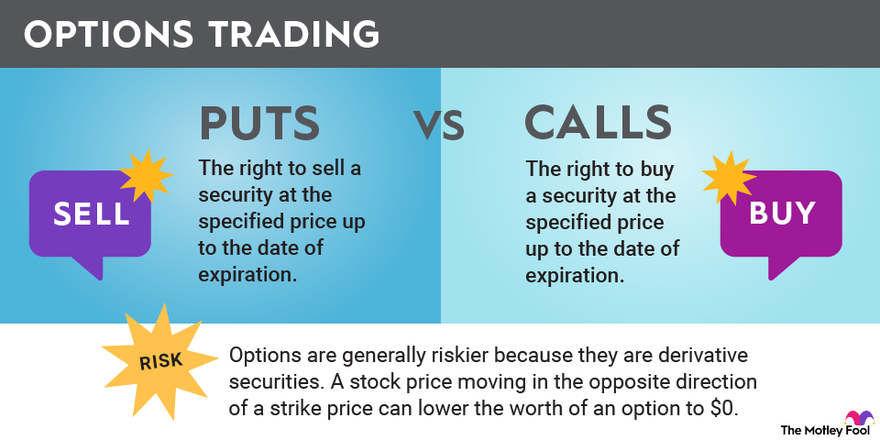Imagine this: You watch the stock market, a swirling vortex of numbers and charts. Suddenly, you spot it – a hidden gem, a stock poised to soar. With your newfound knowledge, you step into the world of options trading, wielding the power to potentially amplify your profits. But here’s the catch: choosing the right stock is the first crucial step. It’s like picking the perfect horse in a race – the wrong choice can lead to costly losses, while the right one could bring untold riches. In this guide, we’ll embark on a journey to uncover the strategies and secrets behind finding the best stocks for option trading, equipping you to navigate the turbulent waters of the market with confidence.

Image: moneypip.com
The world of option trading is a complex and exciting realm, filled with both lucrative opportunities and hidden risks. Options, unlike directly buying or selling stocks, allow you to bet on the future price movement of an underlying asset like a stock, with limited risk and potential for high returns. Mastering the art of option trading involves understanding the nuances of various strategies, selecting the right stocks, and timing your entry and exit points. But before diving into the specifics, let’s grasp the fundamental concept of options.
Demystifying the Basics of Options Trading
Options are contracts that grant the right, but not the obligation, to buy or sell an underlying asset at a predetermined price (known as the strike price) within a specific timeframe. There are two primary types of options:
- Calls: Give you the right to buy the underlying asset at a certain price. You would purchase a call option if you believe the price of the underlying asset will rise.
- Puts: Grant you the right to sell the underlying asset at a specified price. You would buy a put option if you believe the price of the underlying asset will decline.
Option trading, when done strategically, can significantly boost potential gains. However, it also carries inherent risks, as the potential losses can be magnified due to the leverage involved. Therefore, proper research, understanding risks, and a carefully crafted strategy are essential for success.
Factors to Consider When Choosing the Best Stocks for Option Trading
Selecting the right stock is the cornerstone of successful option trading. Remember, you’re not just picking a stock to buy – you’re choosing an asset with which to bet on its future price movement. Here’s a breakdown of factors seasoned traders consider:
1. Volatility: The Power of Movement
Volatility refers to how much a stock’s price fluctuates. High volatility can be a double-edged sword for options traders. While it offers the potential for large profits, it also poses the risk of significant losses. Stocks with higher volatility usually generate more premium for option contracts.
Example: Imagine a stock like Tesla, known for its wild swings in price. Option traders often target such volatile stocks, aiming to capitalize on their rapid price shifts. But the risk is equally high; if your bet is wrong, the potential losses can escalate quickly.

Image: www.fool.com
2. Implied Volatility: A Trader’s Crystal Ball
Implied volatility (IV) is an assessment of how much the market expects a stock’s price to move in the future. It’s a crucial element for options traders as high IV indicates a greater potential for profit or loss.
Example: Imagine two stocks, A and B, both with a price of $100. Stock A has an IV of 50%, while Stock B has an IV of 20%. This means that options on Stock A are priced to reflect larger potential price movements compared to Stock B.
However, remember that implied volatility is just an estimate. The actual volatility can deviate significantly from what the market predicts, leading to unexpected outcomes.
3. Liquidity: Ensuring Smooth Sailing
Liquidity signifies how easily you can buy or sell an option contract. Stocks with high liquidity are desirable as they offer better pricing and ensure smooth transactions.
Example: A highly liquid stock like Apple has a large volume of traders constantly buying and selling options. This translates to tight bid-ask spreads and efficient execution of orders. Conversely, options on illiquid stocks can have wide spreads, making them less attractive for trading.
4. Earnings Season: A Time of Turbulence
Earnings season, when companies release their financial performance reports, can create volatility and opportunity for options traders. Stocks with strong earnings reports often see a surge in price, while those with disappointing results may experience a dip.
Example: A company that beats analysts’ expectations for its quarterly earnings could see a sharp price increase, creating a window for call options traders to profit. However, an earnings miss could lead to a decline in price, opening up opportunities for put options traders.
5. Economic Factors: The Bigger Picture
Economic factors like interest rates, inflation, and global events can significantly impact stock prices, making them a major consideration for options traders.
Example: A rise in interest rates typically puts pressure on the stock market, potentially leading to a decline in prices. This could create opportunities for put options traders. Similarly, geopolitical events like war or a pandemic can lead to significant market swings, offering potential gains or losses depending on the overall market sentiment.
6. Stock Fundamentals: Looking Beyond the Charts
While technical analysis is important in options trading, it’s crucial to assess a stock’s fundamentals as well. A strong company with robust financials, a solid track record, and competitive advantages often stands the test of time.
Example: A company like Microsoft, with a strong market position, consistent cash flow, and commitment to innovation, is likely more resilient to market fluctuations than a struggling, debt-laden company.
7. Time Decay: The Ticking Clock for Options
Options contracts have an expiration date. As the expiration date approaches, the value of the option decreases, a phenomenon known as time decay. This is a key factor to consider when selecting a stock, as it determines the timeframe for potential profits or losses.
Example: An option contract with a short expiration date (e.g., one month) will experience time decay more rapidly than a contract with a longer expiration date (e.g., six months).
Finding the Best Stocks for Option Trading: Strategies for Success
Choosing the right stock for option trading is a multifaceted process, but with a disciplined approach, you can uncover hidden gems and build a winning portfolio. Here are some strategies to guide your search:
1. Leverage Financial News and Research
Stay informed about market trends and company news. Read financial publications, follow industry experts, and analyze financial statements to identify companies with strong growth potential.
2. Utilize Screening Tools
Online brokerage platforms and financial websites offer powerful screening tools that allow you to filter stocks based on various criteria like volatility, implied volatility, liquidity, and valuation.
3. Follow Industry Leaders
Pay attention to the moves of institutional investors and hedge funds. They often have access to deeper insights and resources, and their trades can provide valuable information about promising stocks.
4. Analyze Technical Charts
Technical analysis involves studying price charts and volume data to identify potential trends and patterns. This can help you identify stocks that are experiencing momentum or showing signs of breakout.
Expert Insights: Words of Wisdom from Seasoned Traders
In the dynamic world of options trading, seeking guidance from experienced players is invaluable. Here are some insights from successful traders:
- “Focus on stocks with high volatility, but be mindful of the increased risk. When volatility is high, the potential for profit or loss is amplified.” – John, Experienced Option Trader
- “Don’t chase every hot stock. Instead, look for companies with a strong track record, a sound business model, and predictable growth.” – Sarah, Portfolio Manager
- “Be aware of the psychological factors at play in option trading. Avoid emotional decisions and stick to your predetermined strategy.” – Mark, Chartered Financial Analyst
Actionable Tips: Putting Your Knowledge to Work
Now that you’ve gained a foundation in selecting the best stocks for option trading, here’s how to put your knowledge into action:
- Start small: Don’t risk more than you can afford to lose. Begin with small positions and gradually increase your exposure as you gain experience.
- Diversify: Spread your investments across multiple stocks and option strategies to manage risk.
- Practice: Open a demo trading account to experiment with different option strategies without risking real money.
- Stay informed: Continuous learning is crucial in the ever-evolving financial markets. Stay up-to-date on market trends, economic data, and company news.
Best Stock For Option Trading
The Journey Continues: Unlocking Your Trading Potential
The search for the best stocks for option trading is a continuous journey. It requires a deep understanding of market dynamics, careful analysis, and a disciplined approach. By embracing a growth mindset, seeking expert guidance, and staying committed to learning, you can unlock your potential as an options trader and navigate the exciting world of financial markets with confidence. This guide is just the starting point; remember, the world of options trading is vast, and continuous learning and adaptability are essential for navigating its complexities and making informed decisions. Don’t be afraid to seek further resources, connect with fellow traders, and refine your strategies as you gain experience. The thrill of the markets awaits!






